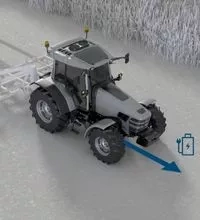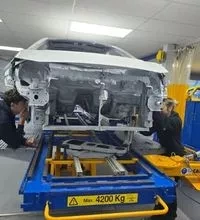Five predictions about the MOT test of 2030
In this article: In 2020, the MOT test will be 60 years old. As vehicles get more complex and connected, and safety pressures grow, how will the MOT evolve?
Under the current MOT test system, most vehicles have to be tested by the third anniversary of registration and annually thereafter (some need to be tested after one year). A qualified tester checks the operation of the lights, the efficiency of the brakes and the emissions produced by the engine, among many other things. The result is a pass or a fail, with a list of minor, major or dangerous defects as appropriate. Failures can happen for a number of reasons: incorrectly adjusted headlights, low tyre tread, excessive exhaust emissions and so on.
But how will the MOT test regime work in an age of alternative fuels and autonomous cars that are connected to the internet of things (IoT)?
1. Monitoring systems will be the focus of MOTs
The DVSA is thinking hard about what will need to change in the future. The MOT is already being updated to reflect how vehicles and new technologies, such as electric drives, tyre pressure monitoring systems and onboard diagnostic (OBD) systems, are developing. A car will now fail the test if the tyre pressure monitoring system is obviously inoperative, or the engine malfunction indicator light is inoperative or indicating a fault.
As cars become smarter, it’s likely that even more monitoring systems that indicate a malfunction will be included as part of the MOT test. The failure of an advanced driver assistance system, such as lane guidance, could be very dangerous if the driver has become used to relying on it.
2. Emissions tests will disappear
Electric and hybrid vehicles don’t have to be tested for emissions, as it is assumed that they are within limits due to the technologies used. OBD systems have been in use now for many years but are increasing in sophistication. They, and the even tighter Euro 7 regulations, could mean the emissions test is not needed on vehicles manufactured after a certain date.
3. Testing electric systems will be fundamental
The safety and security of high-voltage systems on vehicles is also under consideration, and this will require specific training to ensure testers are not injured. Current EVs work on voltages between about 200V and 600V. An electric shock from a damaged wire on these cars is more than enough to kill. Vehicles with voltages of over 1,000V are being considered. Training is essential.
4. Virtual MOTs will be standard
Leaving aside the possibility of an autonomous vehicle taking itself for a test, it’s possible that new vehicles will not need to physically visit a test centre, whether automated or not. On the MOT date each year, the car will perform a full diagnostic and send this to the DVSA. Only after ten years will they need to be physically tested.
5. MOT tests won’t be annual – they’ll be real-time
The era of the real-time MOT test isn’t far away. Already tyres are becoming part of the IoT and will know if they are correctly inflated or damaged, or have adequate tread remaining. Stability control systems will monitor suspension operation so they will know if there is a problem with a spring or a damper. Anti-lock braking and emergency braking systems will know the deceleration figures for all wheels under all manner of conditions. Sensors will monitor the steering wheel movement compared to the mechanism and wheels, so they will know if components are worn. Predictive maintenance systems will be used, electric drive systems don’t produce any emissions at the point of use and electric drives significantly reduce the number of wearing components on the car.
All this information and more will be sent directly to the DVSA over the 6G network, and a virtual MOT certificate will be issued. Actually, it seems that, rather than there being no need for an annual MOT test, the vehicles will be tested every minute of every day – and could refuse to move if they fail.
This article was originally published in issue 1 of MotorPro, the brand new magazine for members of the IMI.
What are your predictions about the future of the MOT? Join the IMI’s conversation on Twitter.
The IMI offers a variety of options for existing MOT testers, including MOT annual training and assessment for classes 1 and 2 (motorcycles) and classes 4 and 7 (light vehicles).
It's that time of year where MOT testers need to complete their annual assessments. The deadline is March 31st, 2024.




